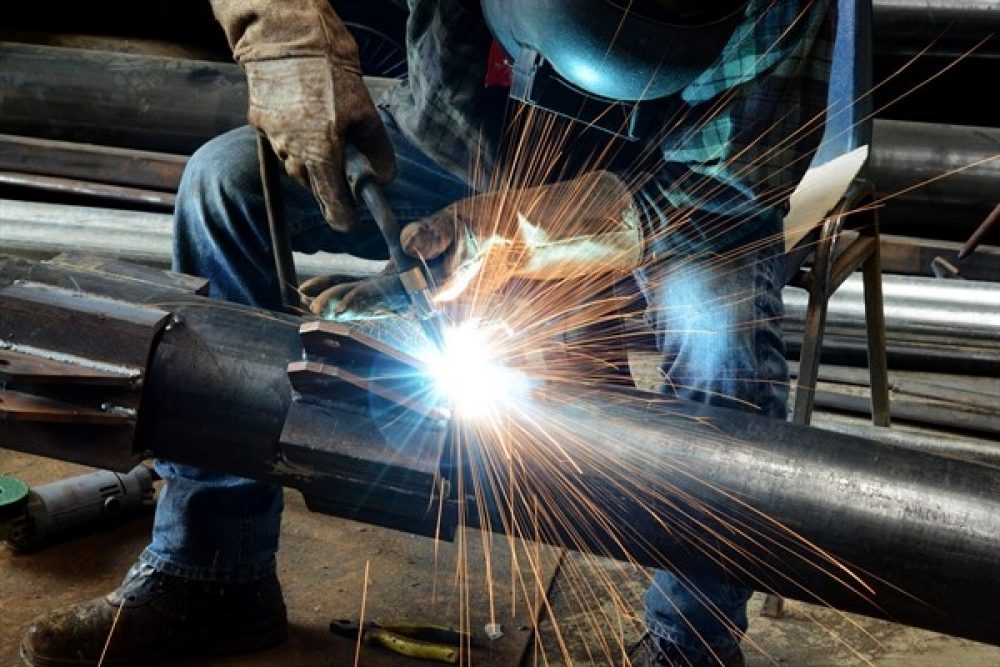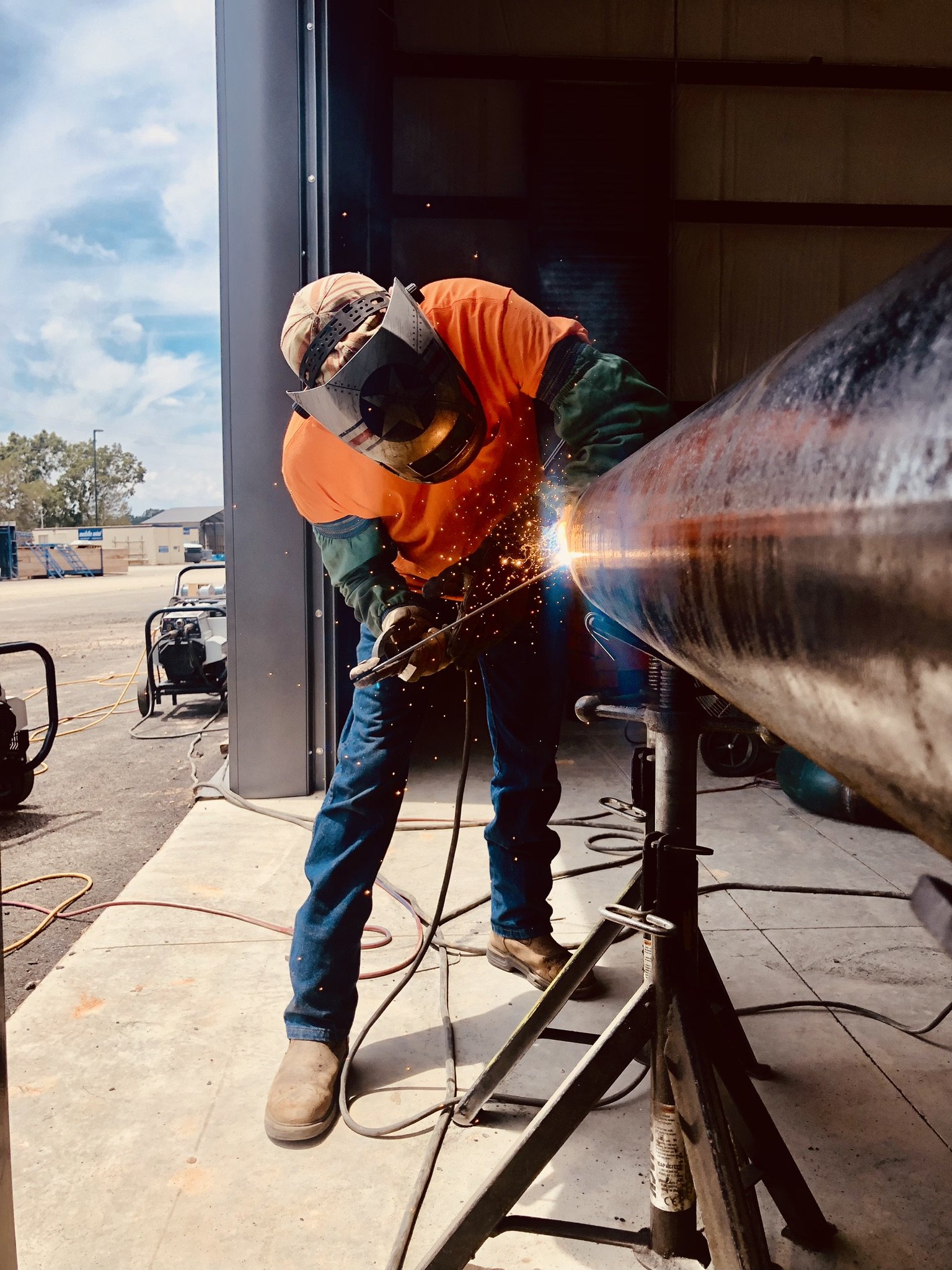Typical Welding Fixing Issues and Just How to Address Them Effectively
Welding fixings usually run into a series of issues that can jeopardize the integrity of the last product. Common problems include inadequate infiltration, porosity, and imbalance, among others. Each issue offers special challenges that need details techniques for resolution. Understanding these concerns is vital for welders aiming to enhance their abilities and end results. This conversation will certainly discover these usual welding repair work problems and reliable approaches to resolve them.
Insufficient Penetration
Poor penetration occurs when the weld metal stops working to completely fuse with the base product, causing weak joints and prospective architectural failures. This issue commonly comes from insufficient warm input, incorrect electrode angle, or inappropriate welding rate. Welders may run into poor infiltration as a result of a mistake of the essential parameters for a particular material density or type. Additionally, contamination on the base product's surface can prevent effective bonding, intensifying the problem. To attend to insufficient penetration, welders ought to assure ideal settings on their equipment and maintain a tidy job surface. Regular evaluation of welds is suggested to determine any kind of shortages early, enabling prompt corrections and the avoidance of endangered structural integrity in bonded assemblies.
Porosity
Porosity is an usual defect in welded joints that shows up as tiny gas bubbles caught within the weld metal. This defect can compromise the honesty of the weld, bring about reduced toughness and prospective failure under anxiety. Welding. Porosity typically arises from contamination, wetness, or incorrect welding strategies, which enable gases to escape right into the molten weld pool. To address porosity, welders should ensure appropriate surface prep work, preserve a tidy functioning setting, and utilize suitable welding specifications. Furthermore, picking the ideal filler product and shielding gas can mitigate gas entrapment. Normal assessment and testing of welds can aid recognize porosity early, guaranteeing timely corrective actions are taken, therefore maintaining the quality and integrity of the welded structure
Imbalance
Misalignment in welding can occur from numerous factors, consisting of inappropriate setup and thermal expansion. Understanding the source is necessary for reliable resolution. Several improvement strategies are available to straighten parts and ensure structural stability.
Reasons for Misalignment
Welding imbalance usually originates from a variety of underlying concerns that can jeopardize structural honesty. One main reason is incorrect fit-up of parts prior to welding, which can result in gaps and irregular surfaces. Variations in thermal expansion during the welding procedure can additionally result in distortion, specifically if the materials being joined have different coefficients of expansion. Furthermore, insufficient fixturing and clamping may fall short to hold parts firmly in position, causing activity during welding. Badly conserved tools, including welding machines and devices, may introduce inconsistencies in the weld bead, more contributing to imbalance. Driver error, stemming from insufficient training or experience, can likewise play a substantial role in developing misaligned welds.

Improvement Methods Readily Available
Dealing with imbalance efficiently calls for a combination of rehabilitative methods tailored to the particular problems at hand. One typical approach is the usage of jigs or fixtures to hold components in the right placement during welding, ensuring constant placement. In addition, preheating the materials can help in reducing distortion and enhance fit-up. For substantial imbalance, mechanical adjustment methods, such as making use of hydraulic jacks or clamps, can be used to remedy the position before welding. Post-weld heat treatment may also be necessary to relieve stress and anxieties triggered by misalignment. Ultimately, mindful assessment and adjustment throughout the configuration stage can prevent imbalance concerns from becoming substantial problems, advertising a smoother welding procedure and boosting general architectural integrity.
Distortion
Distortion is a common challenge in welding that can develop from various factors, including unequal heating & cooling. Understanding the root causes of distortion is vital for implementing efficient prevention techniques. Addressing this issue not only boosts structural integrity however additionally boosts the total quality of the weld.
Reasons of Distortion
When subjected to the intense heat of welding, products usually undergo adjustments that can bring about distortion. This sensation largely arises from thermal growth and contraction throughout the welding procedure. As the weld area heats up, the material broadens; upon cooling, it gets, which can produce interior stress and anxieties. Additionally, uneven home heating across a workpiece can intensify these stress and anxieties, leading to warping or flexing. The kind of material likewise plays a considerable role; metals with varying thermal conductivity and coefficients of expansion might respond differently, leading to unpredictable distortions. Bad joint style and poor fixturing can contribute to imbalance during welding, raising the chance of distortion. Understanding these reasons is vital for efficient welding repair and prevention approaches.
Avoidance Techniques
Reliable avoidance techniques for distortion during welding focus on regulating warmth input and guaranteeing appropriate joint style. Maintaining a constant heat input helps to minimize thermal development and tightening, which can result in distortion. Utilizing strategies such as pre-heating the workpiece can additionally minimize the temperature level gradient, advertising consistent heating. Additionally, selecting appropriate joint designs, such as T-joints or lap joints, can improve stability and minimize stress focus. Executing appropriate fixturing to safeguard the work surfaces in location additionally help in keeping alignment throughout the welding process. Lastly, staggered welding series can disperse warmth extra equally, protecting against localized distortion. By applying these techniques, welders can substantially reduce the probability of distortion and improve the total high quality of their welds.
Splitting
Fracturing is an usual concern come across in welding repairs, frequently arising from different variables such as improper cooling rates, material selection, or insufficient joint prep work. The occurrence of splits can substantially compromise the integrity of the weld, bring about potential failings during procedure. To resolve this issue, welders must initially evaluate the root triggers, making sure that products work and suitably picked for the details application. In addition, regulating the cooling price during the welding procedure is vital; quick cooling can generate stress and result in cracking. Appropriate joint layout and preparation also add to minimizing the risk. Executing these methods can improve weld high quality and sturdiness, ultimately minimizing the probability of cracking in ended up weldments.

Incomplete Blend
A substantial issue in welding repair services is incomplete fusion, which takes place when the weld metal does not appropriately bond with the base product or previous weld passes - Fabrication. This issue can bring about weaknesses in the joint, possibly jeopardizing the integrity of the bonded framework. Variables adding to insufficient blend include inadequate heat input, inappropriate welding strategy, and contamination of the surface areas being signed up with. To address this issue properly, welders need to ensure proper pre-weld cleaning you can check here and surface prep work, along with adjust their welding specifications to achieve sufficient infiltration and combination. Normal examination during the welding procedure can likewise assist determine insufficient blend early, permitting prompt rehabilitative procedures to improve the general high quality of the weld
Overheating
While welding fixings can boost architectural stability, overheating provides a substantial obstacle that can bring about material destruction. Extreme warmth throughout welding can alter the mechanical residential properties of steels, leading to minimized strength, increased brittleness, and bending. This phenomenon is specifically critical in high-stress applications where architectural integrity is extremely important. Recognizing overheating can involve aesthetic inspections for staining or distortion, along with monitoring temperature level throughout the welding process. To reduce view it the dangers related to overheating, welders ought to utilize appropriate methods, such as controlling heat input, changing travel rate, and making use of ideal filler products. In addition, executing pre- and post-weld heat treatments can assist bring back material homes and improve the overall quality of the repair service, guaranteeing lasting performance and safety and security.
Frequently Asked Concerns
What Are the Typical Indicators of a Welding Defect?

Just How Can I Examine My Welds for Top quality?
To test welds for quality, one can make use of aesthetic assessments, ultrasonic testing, and radiographic approaches. Each technique assures architectural stability, recognizes problems, and verifies adherence to specified requirements, inevitably improving the reliability of the bonded joints.
What Security Preventative Measures Should I Take While Welding?
When welding, one should focus on safety by wearing appropriate individual safety devices, ensuring proper air flow, safeguarding combustible materials away, preserving a tidy office, and knowing surroundings to stop injuries and mishaps.
Can I Fix a Weld Without Remodeling the Entire Joint?
Repairing a weld without renovating the entire joint is possible, relying on the damages (Belgrade). Methods such as grinding, adding filler material, or making use of a welding procedure can properly attend to specific imperfections while preserving the bordering structure
What Tools Are Important for Reliable Welding Fixes?
Essential devices for reliable welding fixings include a welding maker, cable brush, mill, safety equipment, clamps, and filler materials. Each tool plays an important function in guaranteeing top quality and safety during the fixing process. Porosity normally emerges from contamination, moisture, or incorrect welding methods, which enable gases to leave right into the molten weld pool. Improperly conserved equipment, including welding equipments and tools, may introduce disparities in the weld grain, further contributing to imbalance. When subjected to the extreme warm of welding, products usually go through modifications that can lead to distortion. Fracturing is a typical problem run into in welding repair work, frequently resulting from numerous elements such as incorrect air conditioning rates, material choice, official site or insufficient joint prep work. A substantial issue in welding repair services is incomplete combination, which occurs when the weld steel does not effectively bond with the base product or previous weld passes.